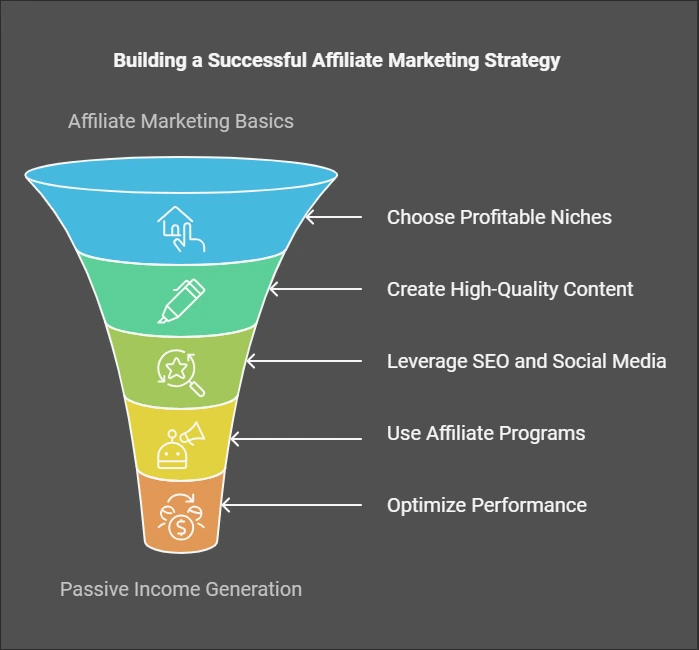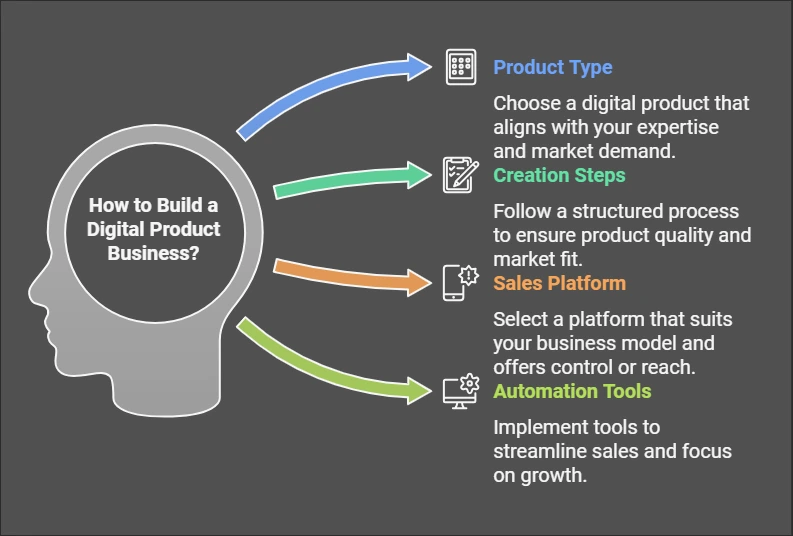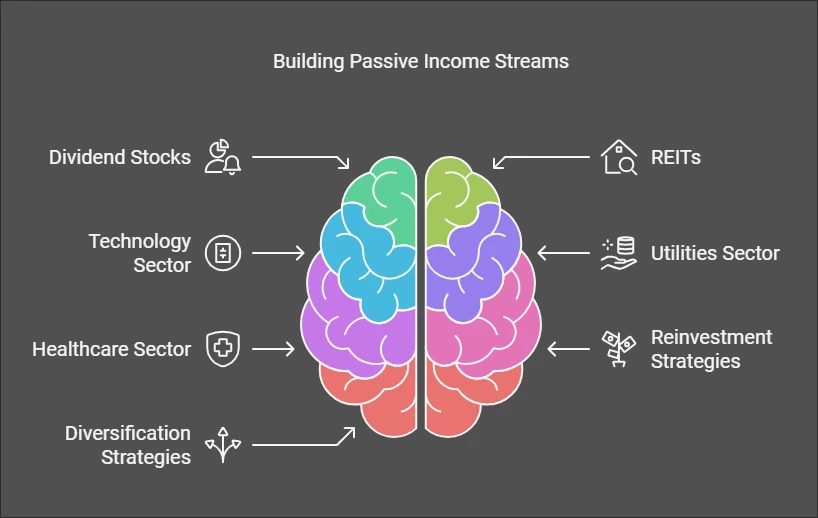Table of Contents
Love this post? Share it!
Introduction
Passive income has become a buzzword in recent years, sparking the curiosity of millions looking for financial freedom. Imagine earning money while you sleep or having a steady stream of income that doesn’t demand your constant time and energy. Sounds like a dream, right? The good news is that in 2025, with the ever-expanding digital landscape, generating passive income online has become more achievable than ever before.
What is Passive Income Online?
Definition and Importance in Today’s Economy
Passive income is money earned with minimal ongoing effort. Unlike a traditional job where you trade time for money, passive income allows you to build systems, assets, or investments that generate revenue with little maintenance.
In today’s rapidly evolving economy, passive income is more than a luxury—it’s a necessity for many. Economic uncertainties, inflation, and shifting job markets highlight the importance of having additional income sources. Passive income streams provide stability, financial security, and freedom to focus on what truly matters, be it spending time with family, pursuing passions, or planning for early retirement.
The Appeal of Passive Income in 2025
The year 2025 brings even more promise for those exploring passive income opportunities. Advancements in technology, widespread internet accessibility, and an increasingly entrepreneurial mindset have created a golden age for online income streams. With automation tools, digital platforms, and innovative business models, building and maintaining passive income sources has become faster, more scalable, and cost-effective than ever.
Why Focus on Online Passive Income Streams?
Accessibility and Scalability
One of the biggest advantages of online passive income streams is their accessibility. All you need is a reliable internet connection and some dedication to get started. Online ventures require far less capital than traditional brick-and-mortar businesses, making them ideal for beginners.
Moreover, scalability is unmatched in the digital realm. Whether you’re promoting a product or building a subscriber base, the potential audience spans the globe. A single effort—like creating an e-book or launching a YouTube channel—can generate revenue for years to come without geographical or time constraints.
If you’re looking to start and grow your online business successfully, don’t miss out on our expert guide! 🚀 Get your copy of “From Zero to Hero: A Step-by-Step Guide to Making Money Online” today and start building your financial freedom. 👉 Grab your eBook now!
Growing Digital Opportunities
The digital world is constantly expanding, offering countless avenues for creativity and entrepreneurship. In 2025, everything from artificial intelligence to social media is being leveraged to create passive income streams. This dynamic environment provides endless opportunities to adapt and thrive, ensuring there’s always room for growth, innovation, and success.
Want to leverage AI to build a profitable online business but don’t know where to start? 🚀 Our beginner-friendly guide walks you through everything you need to know to launch and scale with AI. Don’t miss out—grab your copy of “How to Build an AI-Powered Online Business: A Beginner’s Guide” today! 👉 Get your eBook now!
Strategy 1: Affiliate Marketing

Understanding Affiliate Marketing
How Affiliate Marketing Works
Affiliate marketing is a performance-based business model where individuals promote products or services for a commission. It’s simple: you recommend a product, and when someone purchases through your unique affiliate link, you earn a percentage of the sale. This strategy works wonders because you don’t need to create or own the products—you focus on marketing, while the company handles inventory, delivery, and support.
Benefits of Affiliate Marketing as a Passive Income Stream
Affiliate marketing stands out as one of the most effective and low-risk ways to generate passive income. It offers flexibility, requiring minimal upfront investment. Once your affiliate links are embedded in evergreen content—like blog posts, videos, or social media—you can continue earning from them long after the content is published. Additionally, affiliate marketing allows you to work within your niche of interest, making it enjoyable and engaging.
Best Practices for Success in Affiliate Marketing
Choosing Profitable Niches and Products
Success in affiliate marketing begins with selecting a niche that aligns with your interests and has a proven market demand. Research is key—look for products with high commissions, strong consumer reviews, and relevance to your target audience. Tools like Google Trends and keyword research platforms can help identify trending niches.
Creating High-Quality Content to Drive Traffic
Your content is the backbone of affiliate marketing. Whether it’s a detailed blog post, an engaging YouTube video, or a captivating Instagram reel, focus on providing value to your audience. Answer their questions, solve their problems, and offer genuine insights. High-quality, authentic content builds trust, which is crucial for converting readers into buyers.
Leveraging SEO and Social Media Platforms
Search engine optimization (SEO) ensures your content is discoverable, while social media amplifies its reach. Use SEO best practices like targeting the right keywords, optimizing meta descriptions, and creating backlinks to rank higher on search engines. Simultaneously, leverage platforms like Pinterest, Instagram, and TikTok to promote your affiliate content creatively and interactively.
Tools and Resources for Affiliate Marketing in 2025
Recommended Affiliate Programs
In 2025, affiliate programs have become even more diverse and lucrative. Platforms like Amazon Associates, ShareASale, ClickBank, and CJ Affiliate remain reliable choices for beginners. For niche markets, consider programs like Bluehost (web hosting), ConvertKit (email marketing), or Teachable (online courses).
Essential Tools to Track and Optimize Performance
Efficiency and optimization are crucial for scaling your affiliate marketing efforts. Tools like Google Analytics and SEMrush help track traffic and performance metrics, while platforms like Canva assist in creating eye-catching promotional materials. Additionally, using affiliate link trackers like Pretty Links or ThirstyAffiliates ensures you monitor clicks and conversions effectively.
Affiliate marketing, when done right, can evolve from a side hustle to a full-fledged passive income stream that supports your financial goals while giving you the freedom to live life on your terms.
Strategy 2: Selling Digital Products

The Appeal of Digital Products
Why Digital Products are Ideal for Passive Income
Digital products are an incredible avenue for passive income because they require minimal overhead and are infinitely scalable. Once created, a digital product—whether it’s an e-book, online course, or software tool—can be sold repeatedly without additional production costs. These products are also accessible to a global audience, giving creators unparalleled reach and earning potential.
Moreover, automation tools make it easy to handle transactions and delivery. From payment processing to email follow-ups, much of the business can run on autopilot, allowing creators to focus on crafting new products or scaling their ventures.
Popular Digital Product Ideas
- E-books: Share your expertise or tell a compelling story.
- Online Courses: Teach skills like coding, photography, or fitness.
- Printables: Offer templates, planners, or artistic designs.
- Membership Content: Create subscription-based access to premium material.
- Software Tools: Develop apps or plugins that solve specific problems.
Creating and Selling Digital Products
Steps to Create High-Demand Digital Products
- Identify a Need: Research your target audience to find a problem they’re eager to solve.
- Develop Your Product: Ensure it delivers value. Use tools like Canva for design or Teachable for course creation.
- Test and Refine: Share a beta version with a small audience, gather feedback, and make improvements.
- Set Competitive Pricing: Balance affordability with perceived value.
Platforms to Host and Sell Your Products
- E-commerce Websites: Platforms like Gumroad and Shopify are user-friendly and ideal for beginners.
- Marketplaces: Sell on Amazon Kindle (for e-books) or Etsy (for printables).
- Standalone Websites: Use WordPress or Squarespace to build your own store and retain control over branding.
Scaling Your Digital Product Business
Automating Sales Processes
Automation is key to freeing up your time while growing your revenue. Use tools like Zapier to integrate platforms, automate email sequences with ConvertKit, and manage payments with Stripe or PayPal.
Using Affiliate Partnerships to Expand Reach
Recruit affiliates to promote your products for a commission. Platforms like ClickBank or ShareASale can help you find marketers who align with your brand, effectively broadening your audience and driving sales.
Strategy 3: Investing in Dividend Stocks and REITs

Passive Income through Dividend Stocks
What are Dividend Stocks?
Dividend stocks are shares of companies that distribute a portion of their profits to shareholders as dividends. These payments are typically made quarterly, providing a steady income stream. Unlike growth stocks, which reinvest profits to grow the business, dividend stocks focus on rewarding investors.
Top Dividend Stock Sectors in 2025
- Technology: Companies offering high dividends in emerging tech areas like AI and cloud computing.
- Utilities: A classic choice for consistent payouts, as these companies are less volatile.
- Healthcare: With an aging global population, this sector is poised for stable growth and returns.
REITs as a Passive Income Source
Introduction to Real Estate Investment Trusts (REITs)
REITs are companies that own, operate, or finance income-generating real estate. They allow investors to gain exposure to real estate markets without the need to buy or manage properties directly. By law, REITs must distribute at least 90% of their taxable income as dividends, making them a reliable source of passive income.
How REITs Generate Income
REITs make money through rental income from properties, interest from real estate loans, or capital gains from property sales. Some common types include residential REITs, commercial REITs, and specialized REITs like data centers or healthcare facilities.
Maximizing Returns from Investments
Reinvesting Dividends for Growth
Instead of withdrawing dividends, consider reinvesting them to purchase more shares. Many brokerages offer automatic dividend reinvestment plans (DRIPs), compounding your investment and accelerating wealth growth over time.
Diversification Strategies
Diversification minimizes risk and ensures stable returns. Spread your investments across multiple sectors, regions, and asset classes, including a mix of dividend stocks and REITs. This approach guards against market volatility and ensures steady income streams.
By combining these strategies, you can create a balanced portfolio that delivers consistent passive income while mitigating risk. Whether you choose to invest in dividend stocks, REITs, or both, these options offer a solid foundation for financial independence.
Strategy 4: Creating a Subscription-Based Service
The Subscription Economy in 2025
The subscription economy continues to thrive in 2025, with consumers valuing convenience, personalization, and consistent access to their favorite services. From streaming platforms to fitness apps, subscription-based models have become a preferred choice for businesses to ensure recurring revenue.
Why Subscription Models are Lucrative
Subscription models are lucrative because they provide predictable income. Once customers sign up, businesses can focus on retaining them, building a steady cash flow with less dependency on one-time sales. Additionally, subscriptions create opportunities to upsell premium features and foster long-term customer relationships.
Types of Subscription-Based Services
- Content Subscriptions: Premium newsletters, online courses, or exclusive video content.
- Product Subscriptions: Monthly boxes for beauty products, snacks, or fitness gear.
- Software-as-a-Service (SaaS): Tools like project management software or marketing automation platforms.
- Membership Communities: Access to niche communities offering networking, resources, and mentorship.
Building a Successful Subscription Business
Identifying a Target Audience and Value Proposition
Success begins with understanding your audience’s needs. Research their pain points and tailor your service to solve specific problems. Craft a clear value proposition that sets you apart from competitors.
Setting Up Payment and Delivery Systems
Utilize reliable subscription management tools like Stripe, Chargebee, or PayPal to handle payments seamlessly. Ensure content or products are delivered promptly through platforms like Kajabi (for digital products) or ShipStation (for physical goods).
Retention and Growth Strategies
How to Reduce Churn Rates
- Regularly engage customers with new features, content, or updates.
- Offer tiered pricing to retain budget-conscious users.
- Actively seek feedback and resolve issues quickly.
Enhancing Customer Experience for Longevity
- Personalize interactions using CRM tools.
- Create a community around your brand to foster loyalty.
- Reward long-term subscribers with discounts or exclusive perks.
Strategy 5: Building a Content Monetization Platform
Options for Content Monetization
Blogging and Ad Revenue
Blogging remains a powerful tool for earning passive income through ad networks like Google AdSense or Mediavine. By creating high-quality, SEO-optimized content, you can attract a steady stream of visitors and convert traffic into revenue.
Video Content on Platforms like YouTube
YouTube creators earn through ad revenue, sponsorships, and channel memberships. Regular uploads and engaging storytelling help build a loyal audience. Monetization becomes easier with tools like YouTube Partner Program and merchandise integration.
Podcast Monetization Opportunities
Podcasters can monetize by offering sponsored episodes, premium subscriptions, or listener donations through platforms like Patreon. High-quality content and consistent publishing are crucial for building an audience.
Steps to Monetize Content Effectively
Creating Engaging and Consistent Content
Develop a content calendar to maintain consistency and focus on delivering value. Leverage storytelling and high production quality to captivate your audience.
Partnering with Brands and Sponsors
Collaborate with brands that align with your content. Sponsored posts, product reviews, and affiliate partnerships can significantly boost income while maintaining authenticity.
Tools to Boost Content Monetization
Analytics Tools for Tracking Performance
Use platforms like Google Analytics or YouTube Studio to track content performance. Understand metrics like engagement, click-through rates, and audience demographics to refine your strategy.
Advertising Platforms for Maximizing Revenue
Platforms like AdSense for blogs or Anchor for podcasts streamline advertising and revenue collection, enabling you to focus on content creation.
Conclusion
Recap of the 5 Strategies
Generating passive income online in 2025 offers more opportunities than ever. By exploring affiliate marketing, selling digital products, investing in dividend stocks and REITs, creating subscription services, or monetizing content, you can diversify your income streams and work toward financial independence.
How to Choose the Best Strategy for Your Goals
Select a strategy based on your skills, interests, and available resources. Experiment with different options and adapt as you learn.
The Importance of Patience and Persistence in Building Passive Income Streams
Building passive income requires time, effort, and consistency. Results may not appear overnight, but persistence pays off as your efforts compound over time.
FAQs
What is the easiest way to start generating passive income online in 2025?
Affiliate marketing is one of the simplest methods, requiring minimal upfront investment and leveraging existing platforms like blogs or social media.
How much time does it take to see results from these strategies?
The timeline varies. While affiliate marketing can show returns in months, investments like dividend stocks may take years to build significant income.
Do I need a large investment to begin building passive income online?
No. Many strategies, like blogging or affiliate marketing, can start with minimal investment. However, some, like dividend stocks or SaaS development, may require more capital.
Which strategy is the most scalable?
Selling digital products and creating subscription services offer the most scalability as they can cater to a global audience with minimal incremental costs.
Can I combine multiple passive income strategies for greater success?
Absolutely. Diversifying your efforts across strategies, such as combining content monetization with affiliate marketing, can maximize your income potential.

